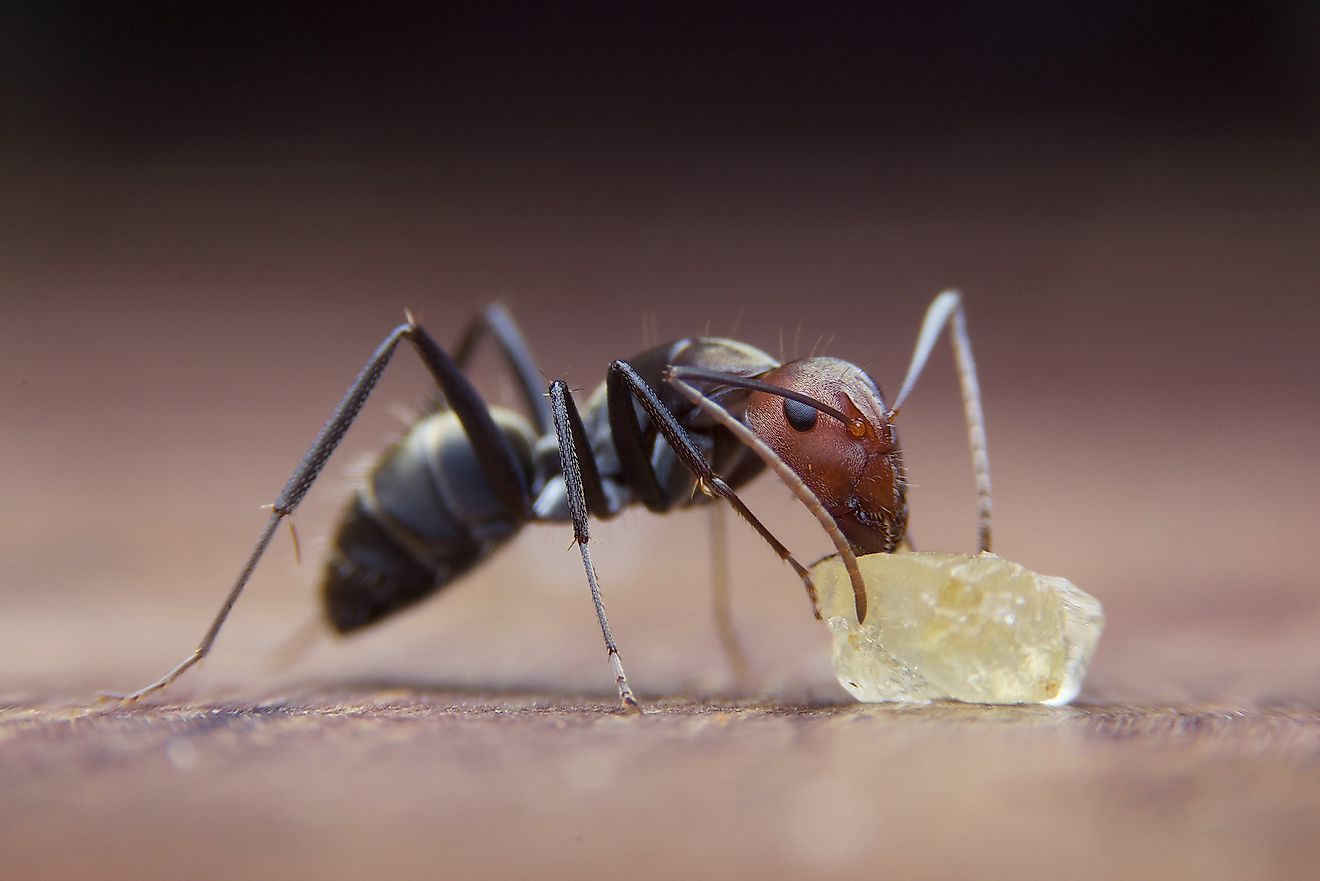What Do Ants Eat?

- There are around 13,000 different ant species, and they are generally classified as omnivores. This means that they eat both plants and meat, which can add another layer of complexity to their diet.
- Some ants are carrion eaters, similar to hyenas and vultures, meaning that they feed on dead animals. These ants prefer sources of protein that are already decaying.
- The leafcutter ant can cultivate special funghi and then create "farms" by collecting the semi-digested plant material. These "farms" then serve as a source of food.
- No matter the feeding habits or preferences, all ants are foragers. They leave their nests and search far and wide for different food sources.
Most people would probably imagine the diet of an ant to be quite simple. Maybe some grass, or whatever leftover breadcrumb they manage to find somewhere. Well, you'd be surprised to learn that ants have an incredibly diverse diet, one that almost rivals the diet humans in its complexity.
Ants are not as simple as we often imagine them to be, and they have managed to come up with many brilliant ways to find, harvest, store, and share their food. There are around 13,000 different ant species, and they are generally classified as omnivores. This means that they eat both plants and meat, which can add another layer of complexity to their diet. Still, it is largely dependent on the species, and most just prefer one kind of food, which makes it easier for us to identify them.
A Complex Diet
Interestingly, some of the most harmful and persistent ants have the most simple diets. One example would be fire ants whose diet is among the least specialized among all of the ant species. Several species of ants exhibit predatory behavior, killing and then eating other insects. There are ants that are even capable of killing small animals. Some ants are carrion eaters, similar to hyenas and vultures, meaning that they feed on dead animals. These ants prefer sources of protein that are already decaying.

Then there are those ants that could almost be considered agriculturalists. One example is the leafcutter ant, which can cultivate special funghi and then create "farms" by collecting the semi-digested plant material. These "farms" then serve as a source of food. Other interesting species are the sugar ants, also known as the dairying ants, who like to keep other insects as cattle. These insects are called aphids, and they usually destroy crops and feed on plant sap. These ants protect aphids from predators, and in return, "milk" them of honeydew, a special substance they produce. You can see from these few examples how similar the feeding habits of ants are to those of humans.
Opportunistic Eaters
No matter the feeding habits or preferences, all ants are foragers. They leave their nests and search far and wide for different food sources. Once they discover the food they deem acceptable, these worker ants return to the nest and leave a trail of chemicals behind. This trail is made up mostly of pheromones and is picked up by other ants to help them search for that food source. Pheromones are unique to ants that belong to a specific colony and are also often used to mark territories.

When the ants finish establishing the trail of pheromones, other worker ants begin working in shifts. They circulate and set out for the food source. Once they find it, they retrieve as much food as they can and return to the nest. These ants also leave a new trail of pheromones, so that the next "shift" of workers can follow it. This is why you can often see ants marching in a long straight line.
Ants are extremely opportunistic creatures, meaning if they find a trace of food anywhere, they will give it their all to collect it. This is why they can often be found inside houses, and any food that is left in the often can become an invitation for ants. This is why it is recommended to refrigerate fruit, take care of crumbs, especially if they are near windows or cracks in the walls or floors.











